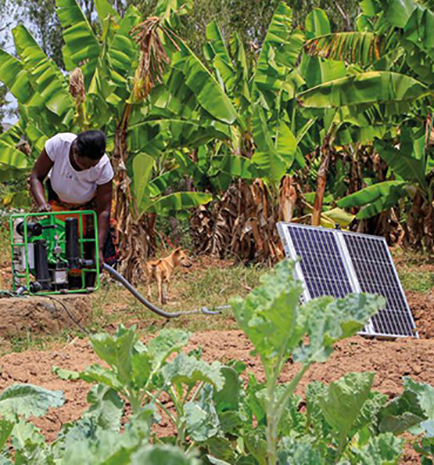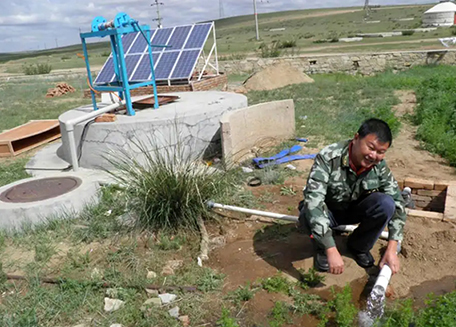Agricultural technology is changing rapidly. Farm machinery, farm building and production facilities are constantly being improved. Agricultural applications suitable for photovoltaic (PV) solutions are numerous. These applications are a mix of individual installations and systems installed by utility companies when they have found that a PV solution is the best solution for remote agricultural need such as water pumping for crops or livestock.
The solar water pump system is made up of two basic components. These are PV panels and pumps. The smallest element of a PV panel is the solar cell. Each solar cell has two or more specially prepared layers of semiconductor material that produce direct current (DC) electricity when exposed to light. This DC current is collected by the wiring in the panel. It is then supplied either to a DC pump, which in turn pumps water whenever the sun shines, or stored in batteries for later use by the solar water pump.

A solar water pumping system is ideal in remote locations where grid electricity does not exist or it is cumbersome to carry in gasoline or diesel to feed a pump. All you have to do is set up the solar system and it operates on solar power, free of charge, on its own. But “all you have to do is set up the system” is often not that easy. The drawback of solar pumping systems is they tend to be a lot more costly than fossil fuel or grid-based systems to establish.

New farm enterprise establishment is a critical time, at which the benefits of freedom from fossil fuels are weighed against the high cost of setting up a solar powered water pump system. Having a good grasp of the basic principles of solar water pumping will enable you to identify the appropriate scale of the system needed, and what parts will best meet your watering needs.
This will help you avoid unnecessary purchases or costs, design and install an adequate and properly functioning system, and understand how much water a system may or may not supply at any given time.